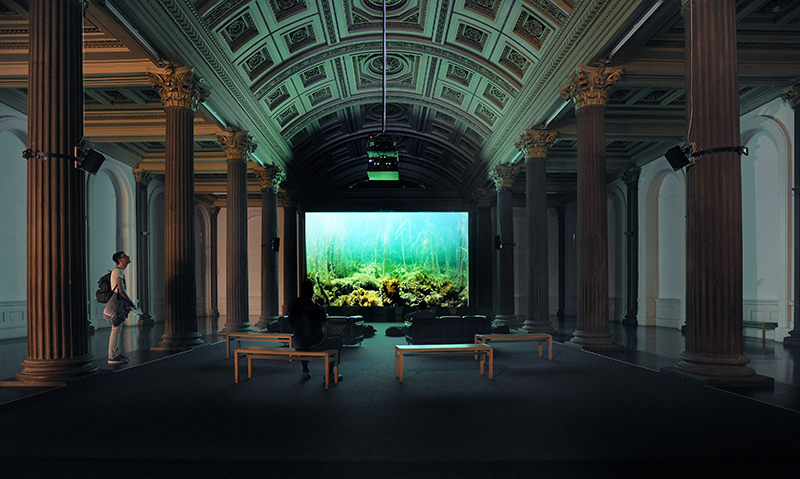
Clyde Reflections installation, GoMA, photo by Alan Dimmick
Clyde Reflections is a 33-minute film and audio-visual installation based around interviews with seven people that explore their perceptions of the marine environment in the Firth of Clyde. It has been selected to run at Glasgow’s Gallery of Modern Art (GoMA), from 29 May to 5 July, as part of the gallery’s Moving Image Season. The project was devised by Glasgow-based artist filmmaker Stephen Hurrel and social ecologist Ruth Brennan, a research associate at the Scottish Association for Marine Science (SAMS). They got in touch to tell us a bit more about their creative work process.
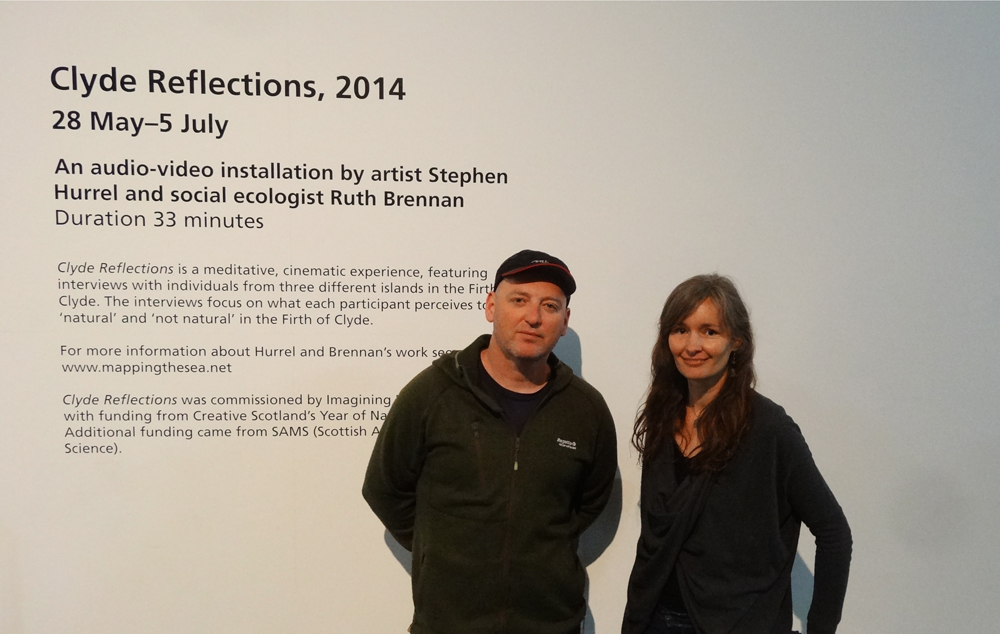
Stephen Hurrel & Ruth Brennan at GoMA, photo by Katie Bruce
Clyde Reflections grew out of ideas and working methods employed within recent marine-based film, digital media and social science projects that Hurrel and Brennan have undertaken, both as a collaborative art-science team, since 2011, and independently. Clyde Reflections was commissioned by Imaging Natural Scotland/Creative Scotland and is currently installed in the grand, main space of GoMA as part of their Moving Image Season.
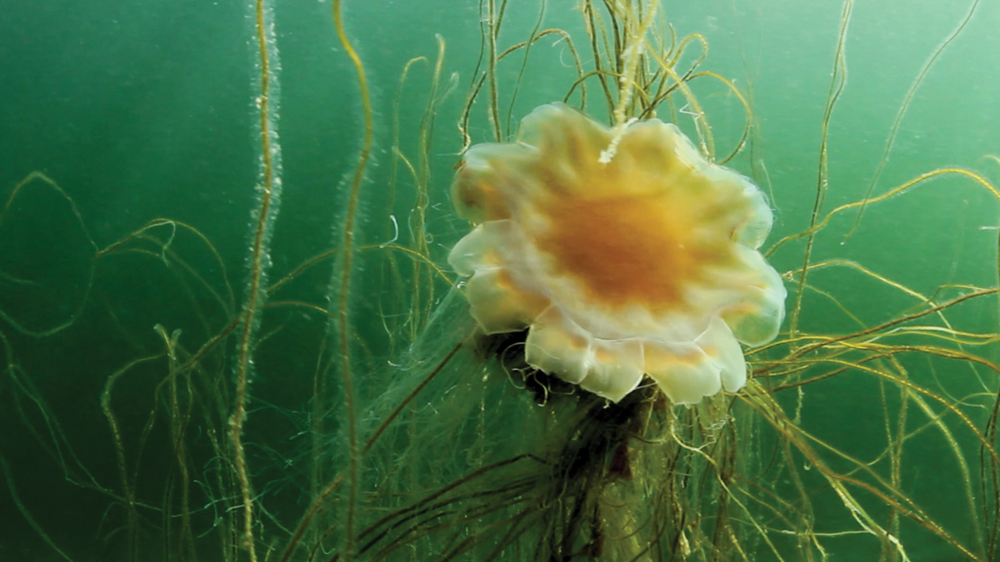
Still from Clyde Reflections (featuring underwater footage by Howard Wood) by Hurrel and Brennan
Hurrel and Brennan’s collaborative activity began after meeting on a Cape Farewell (art-science) expedition, which involved sailing to several islands in the Outer Hebrides to explore ideas around sustainability. Following that trip Hurrel was offered a Cape Farewell commission to produce a short film on the island of Barra. He had also become aware that the research methods that Brennan was using as a social ecologist on Barra were similar to approaches that he, and other artists involved in socially-engaged art practice, had used.
So it seemed a good opportunity to explore possible crossovers within the same environment. Brennan’s doctoral research aimed to gain insights into the roots of a conflict over the creation of two marine protected areas off the coast of Barra through exploring the cultural, social and historical context of the local community. She used this cultural groundwork to shed light on how, in Barra, people and place function together within, and as, an ecosystem.
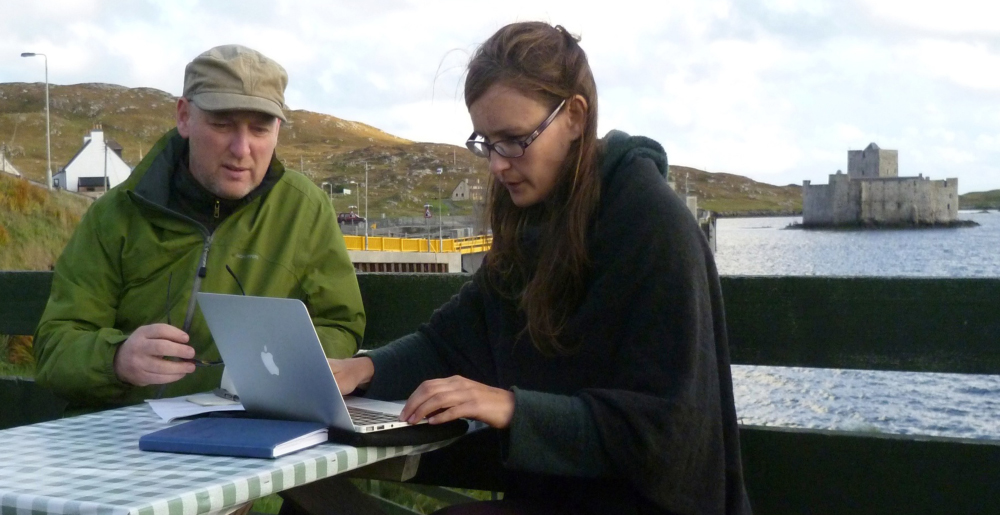
Stephen & Ruth, Barra outdoors studio by Stephen Hurrel
It became evident that there were meeting points in terms of working methods and areas of interest, and that the sharing of information, ideas and skills would be beneficial. One such interest lay in exploring different people’s perceptions of the same landscape as a way to reveal hidden relationships within natural and man-made environments.
The first art-science collaboration (that also involved social ecologist Iain MacKinnon) resulted in the publication Dùthchas na Mara/Belonging to the Sea*. Following this, Hurrel and Brennan developed a proposal that expanded on the research for the publication, and that engaged further with the people of Barra. That year-long project resulted in the online cultural map of the sea Sgeulachdan na Mara/Sea Stories: Barra.*
By 2013, Hurrel and Brennan had worked on a combination of independent and collaborative marine-based projects, and had a good foundation on which to develop a new project.
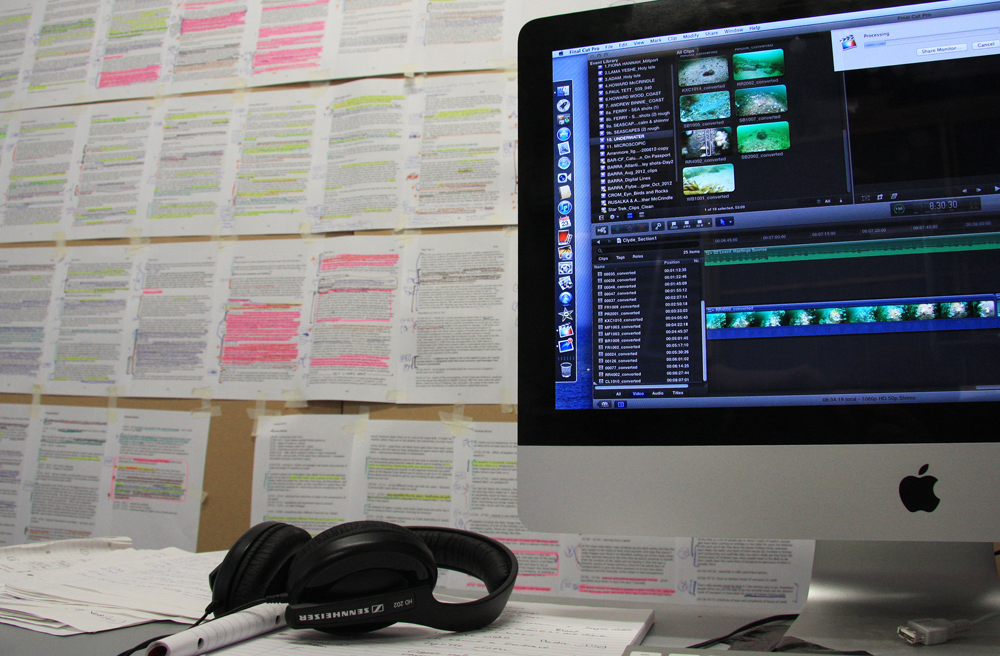
Work in Progress: text edit on wall and video edit by Stephen Hurrel
With Clyde Reflections, their initial idea was to engage in an exploratory process to reveal the complexity of an area of sea that is not normally evident when looked at by an outsider. By engaging with people who connect deeply with their environment, they wanted to create a multi-perspective representation of a particular marine area that would challenge a simplistic representation of a familiar environment. They believed this could provide a creative example of how ‘landscape’ is not a fixed entity, or separate from people, but is dynamic in terms of its socio-ecological properties as well as how it can be perceived. They were more interested in revealing a multi-layered reading of place than presenting a negative perspective and in creating an immersive experience that takes the viewer on a journey by creating a specific mood and pace.
Ruth said: “The aim of the film is not to deliver a specific message, but rather to provoke thought and reflection. How are people’s perceptions of the Clyde formed and how can the same body of water be perceived so differently by so many people?
“We also want people to consider and contemplate the bigger picture: How can we live sustainably? How do we deal with climate change? What is our relationship to the sea?”
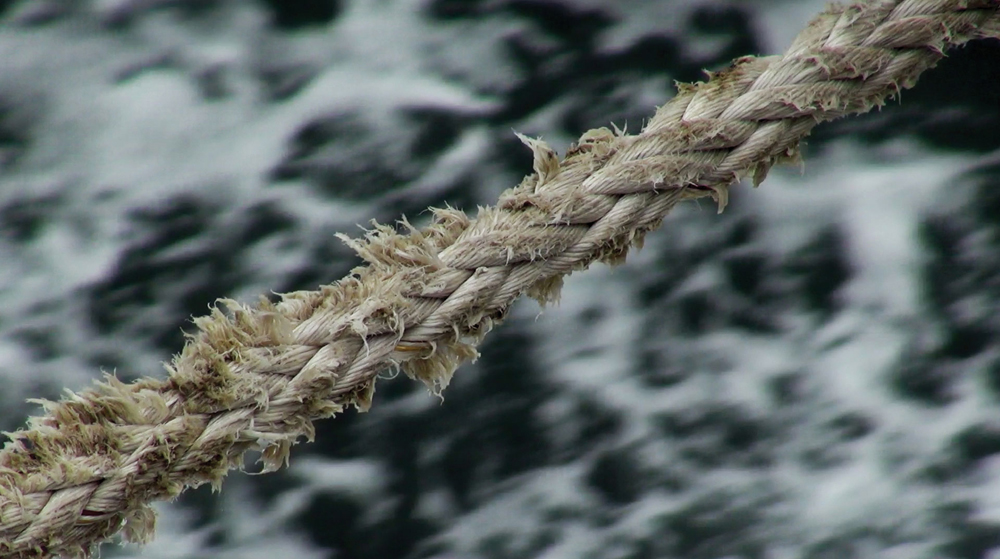
Still from Clyde Reflections by Stephen Hurrel
Hurrel and Brennan’s grounded as well as creative approach is recognised as an important contribution to research being undertaken within the wider policy environment. They are currently collaborating as an art-science partnership alongside a multidisciplinary research team developing new marine spatial planning approaches in Sweden. This allows them to continue to explore complexities of relationships between nature and culture, and to devise new ways of employing visual, audio and digital art within a scientific context.
* www.mappingthesea.net – to download a PDF copy of the publication (Dùthchas na Mara/Belonging to the Sea) and to access the online cultural map of the sea (Sgeulachdan na Mara/Sea Stories: Barra)
There will be a free seminar tomorrow afternoon 13 June at GoMA with artist Stephen Hurrel, social ecologist Ruth Brennan, Prof Andrew Patrizio (Professor of Scottish Visual Culture, University of Edinburgh), Prof Sian Sullivan (Professor of Environment & Culture, Bath Spa University) and Chris Fremantle (independent researcher and producer, writer and initiator of ecoartscotland). For more information, visit here.
Clyde Reflections continues at Glasgow’s Gallery of Modern Art until 5 July.
Hurrel and Brennan would like to thank their interviewees for their generous participation:
Howard McCrindle (retired fisherman) | Prof Paul Tett (Reader in Coastal Systems and Biological Ocenaographer) | Ven. Lama Yeshe Losal Rinpoche (Abbot of Kagyu Samye Ling and Executive Director of the Holy Isle Project) | Dr Fiona Hanna (Former Acting Director and Senior Lecturer at University Marine Biology Station Millport. Honorary Lecturer at University of Glasgow) | Howard Wood (Diver and Chair of Community of Arran Seabed Trust (COAST)) | Andrew Binnie (Executive Director, Community of Arran Seabed Trust (COAST)) | Adam Rose (Holy Isle Project Volunteer)
More: Stephen Hurrel | Ruth Brennan | Clyde Reflections
//////
Looking for more blogs? Visit here.


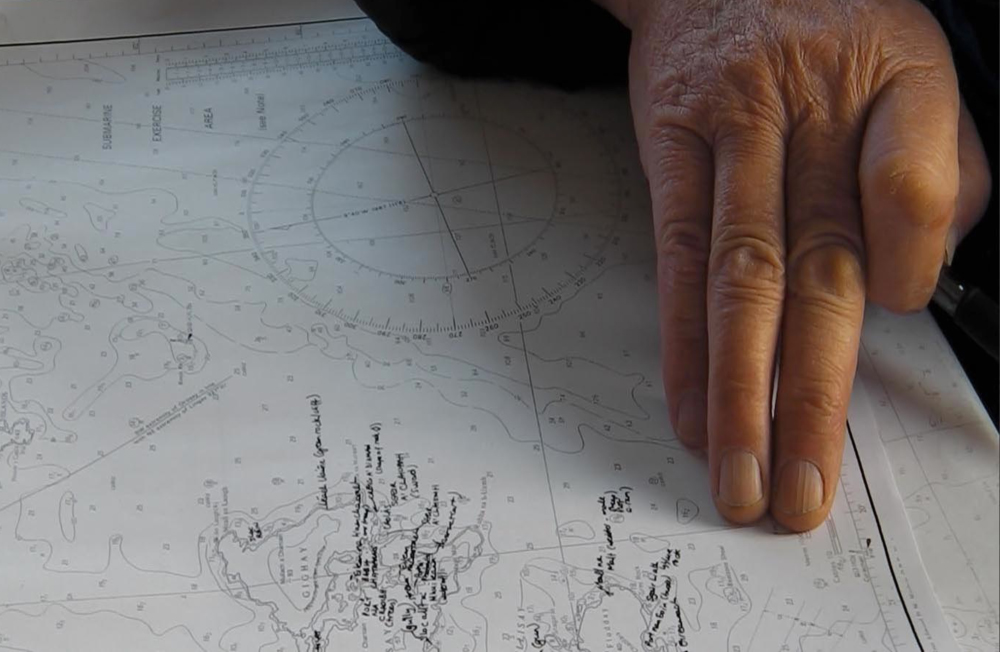
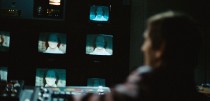











Comments